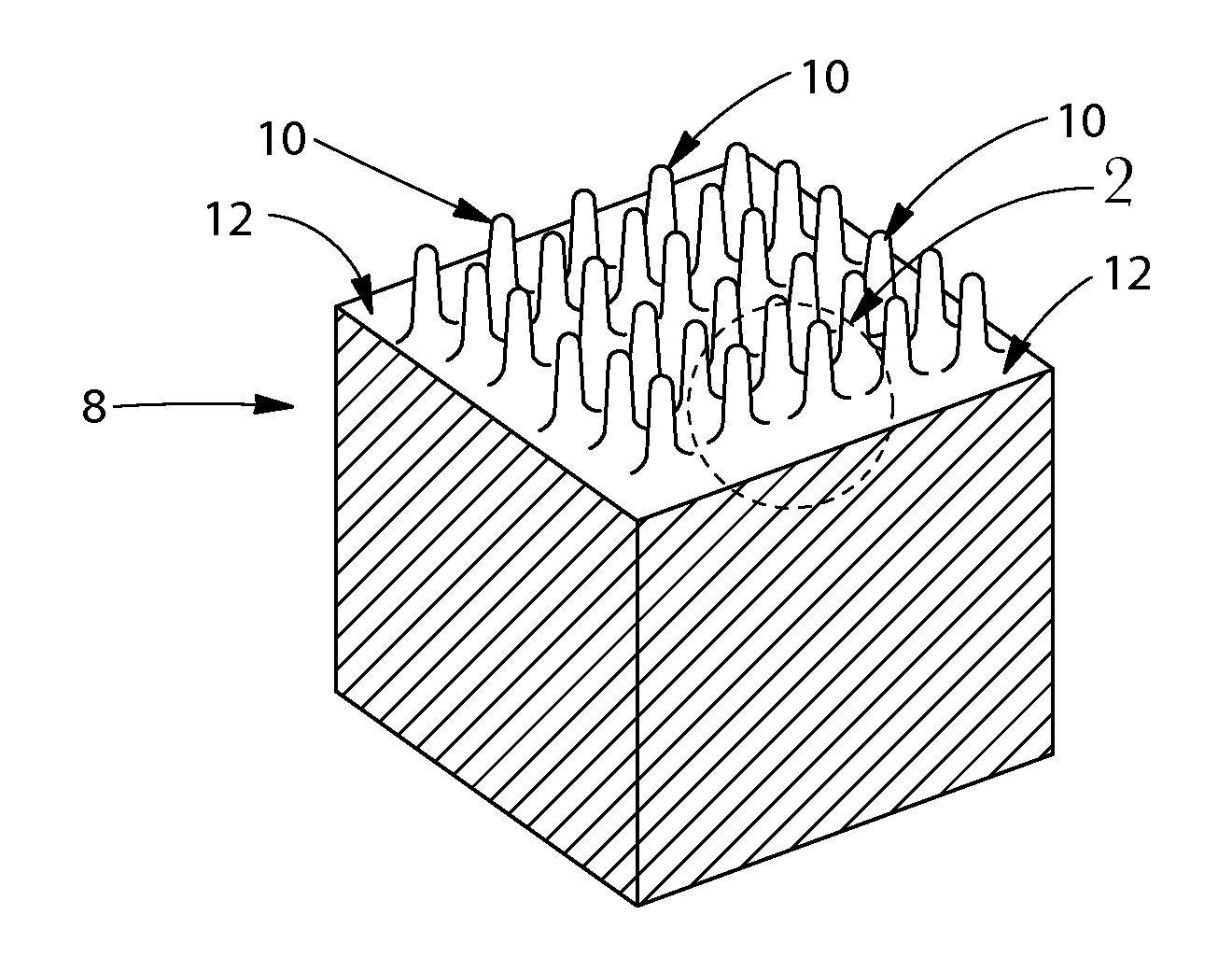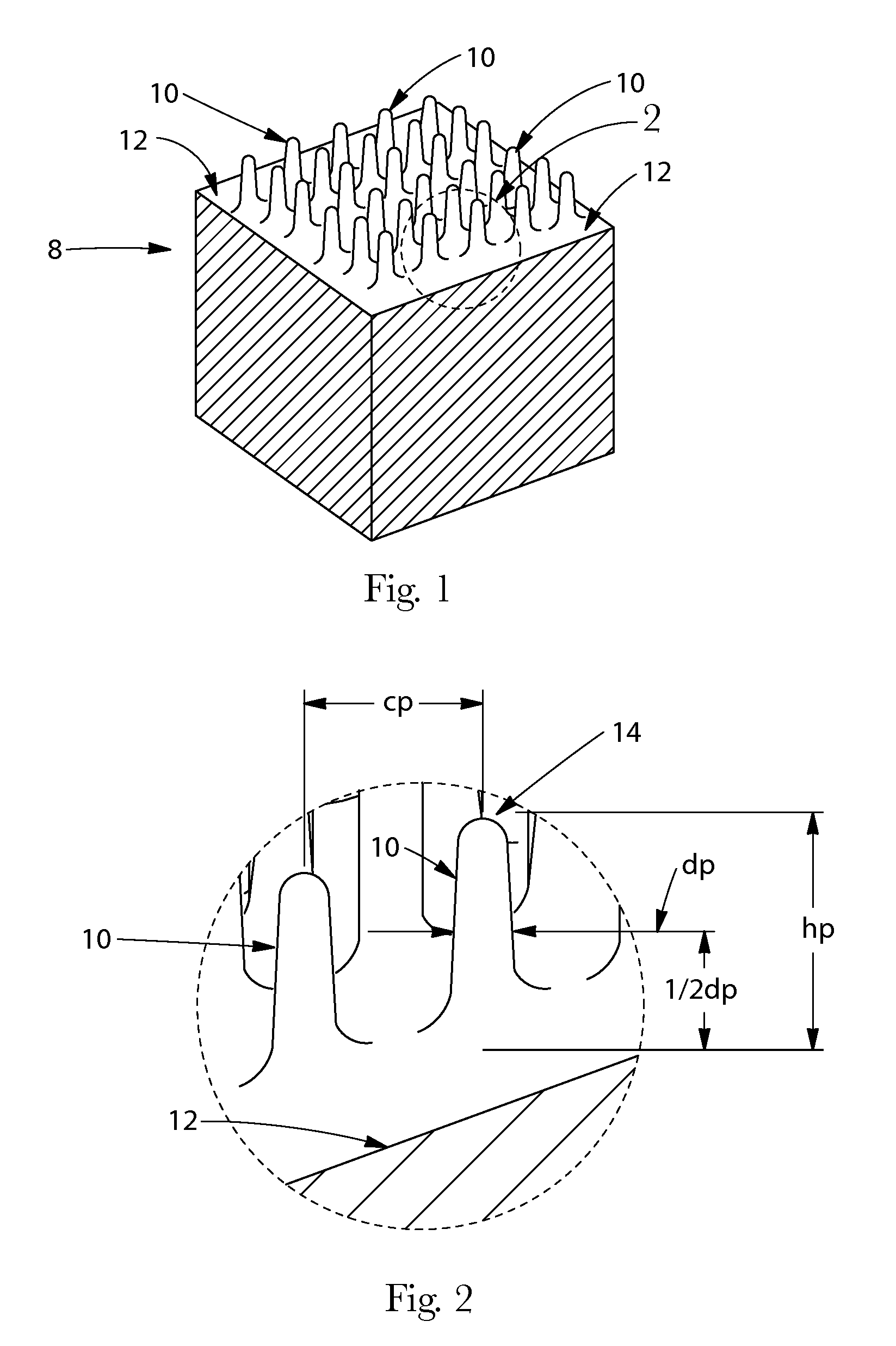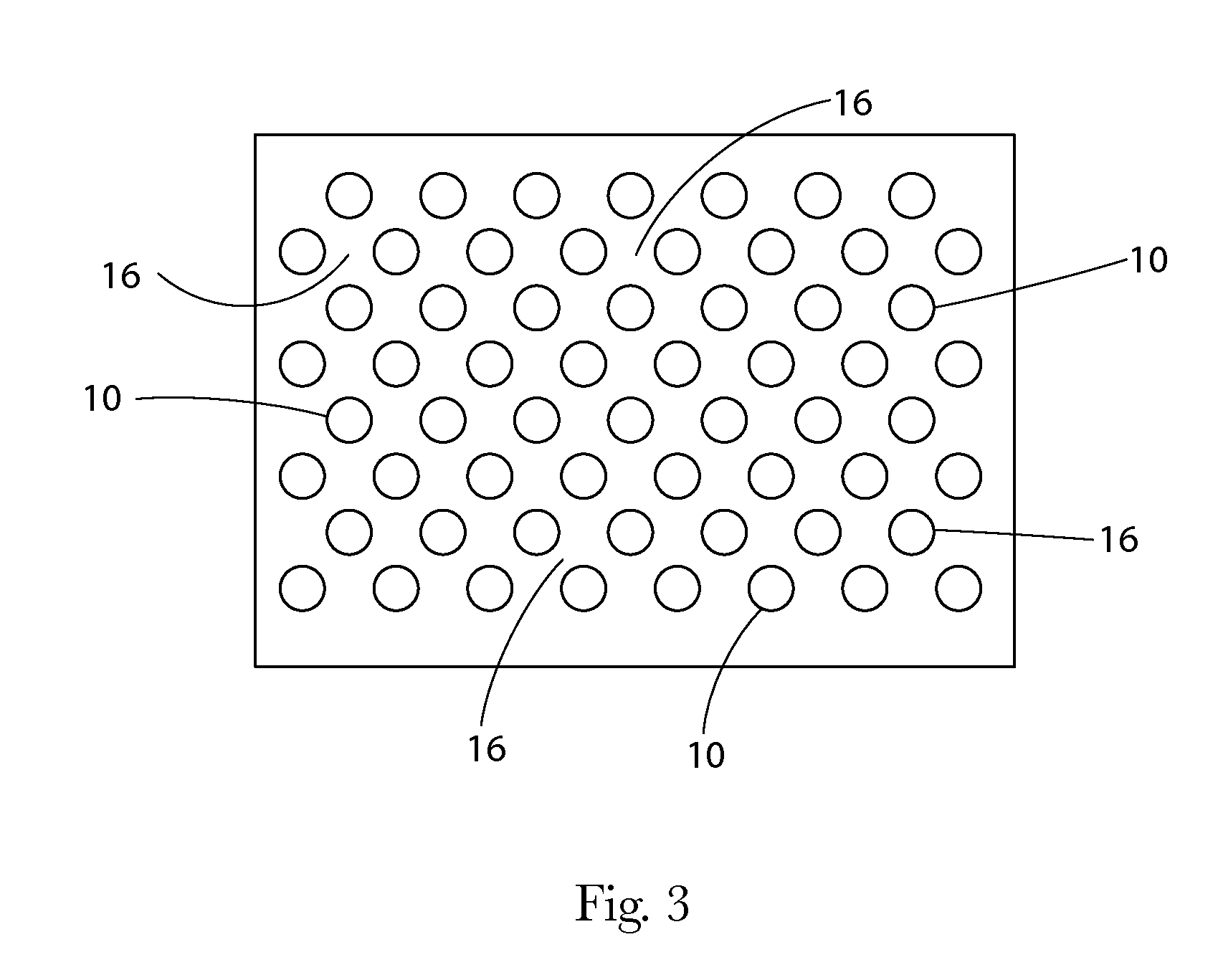Process for making an embossed web
a technology of embossed webs and embossed edges, which is applied in the field of embossed web making processes, can solve the problems of inefficient vacuum forming process, high cost and inefficiency of hydroforming process, and the limited amount of vacuum forming process, so as to achieve the effect of hardness of rubbl
- Summary
- Abstract
- Description
- Claims
- Application Information
AI Technical Summary
Benefits of technology
Problems solved by technology
Method used
Image
Examples
examples
[0140]The following non-limiting examples demonstrate the impact of several variables on the average height of the discrete extended elements of the embossed webs of the present invention.
examples 1-15
Effect of Temperature and Pressure
[0141]Fifteen embossed webs are produced under various pressures and temperatures—utilizing the same forming structure, compliant substrate, and precursor web—to determine the effects of pressure and temperature on the average height of the discrete extended elements of the embossed web.
[0142]The forming structure utilized is made by laser engraving a 3.2 mm (⅛″) thick polyacetal sheet to form a plurality of discrete protruded elements in the polyacetal sheet. The discrete protruded elements are evenly spaced along the surface of the polyacetal sheet. The discrete protruded elements have tapered sidewalls with rounded tips (having a radius of about 50 microns (i.e. 2 mil)) and have an average height of about 270 microns, an average diameter (at half height) of about 100 microns, and center-to-center spacing of adjacent discrete protruded elements of about 254 microns (10 mil). The size of the forming structure is 5 cm×5 cm (2″×2″).
[0143]The complian...
examples 16-20
Effect of Film Type and Basis Weight
[0148]Five embossed webs are produced under various pressures to determine the effect of pressure on the average height of the discrete extended elements of the embossed web.
[0149]The forming structure and compliant substrate utilized are the same as those utilized in Examples 1-15 above.
[0150]The precursor web utilized is a polyethylene / polypropylene film having a basis weight of about 14 gsm and a thickness of about 15 microns (available from RKW).
[0151]The embossed webs are made using the hydraulic press and method of Example 1, except that in making each embossed web, the process is carried out at a temperature of 25 C.
[0152]Five embossed webs are produced under various pressures. The pressure for producing each web is controlled to within about ±0.5 MPa (±75 psi). The average height of the discrete extended elements of each embossed web is measured as in Examples 1-15 above.
[0153]The average height of the discrete extended elements for each e...
PUM
| Property | Measurement | Unit |
|---|---|---|
| Temperature | aaaaa | aaaaa |
| Temperature | aaaaa | aaaaa |
| Length | aaaaa | aaaaa |
Abstract
Description
Claims
Application Information
 Login to View More
Login to View More - R&D
- Intellectual Property
- Life Sciences
- Materials
- Tech Scout
- Unparalleled Data Quality
- Higher Quality Content
- 60% Fewer Hallucinations
Browse by: Latest US Patents, China's latest patents, Technical Efficacy Thesaurus, Application Domain, Technology Topic, Popular Technical Reports.
© 2025 PatSnap. All rights reserved.Legal|Privacy policy|Modern Slavery Act Transparency Statement|Sitemap|About US| Contact US: help@patsnap.com



